
Section of a Boeing 747, 1973.
1973
Section of Boeing 747 foreward fuselage (cut from 747-SR-46 supplied to Japan Air Lines 21/12/73).
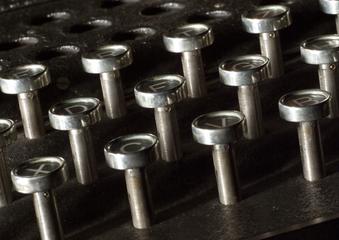
Three-ring Enigma cypher machine in oak wood transit case
1934
Three-ring Enigma cypher machine complete in oak wood transit case, together with original German battery (Serial number A6421/1937), unsigned, Germany, 1934 (see Note)
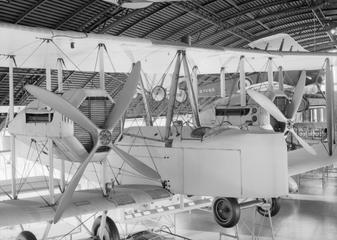
Alcock and Brown's Vickers Vimy Biplane
1919
Alcock and Brown's Vickers Vimy biplane.

'Lucky Jim' toy cat mascot
circa 1915
'Lucky Jim' toy cat mascot, formerly owned by Jack Alcock and with him during the first non-stop transatlantic flight in 1919.
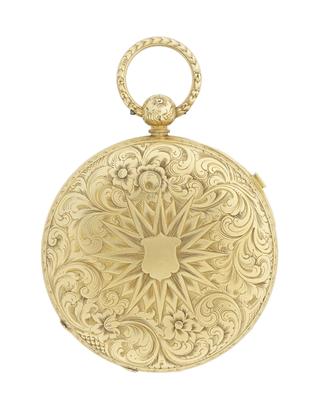
Watch made for the 1851 Great Exhibition by Alexander Watkins
1851
Exhibition-grade clock-watch by Alexander Watkins, London, 1851. Mahogany outer box with case-lid lined in silk. Gold watch case, profusely engraved. Four-coloured gold dial, with day-of-the-month dial. Steel hands. Movement of eight-day duration with quarter-striking as well as repeating on 5 gongs. Spring-detent escapement. Backplate profusely engraved, and signed 'Alexr. Watkins, City Road 1851. London'. Clockmakers' Museum No. 449
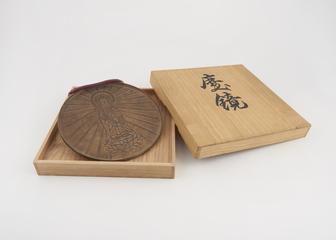
Japanese magic mirror
Japanese magic mirror made by Mr. Yamamoto according to the traditional method.
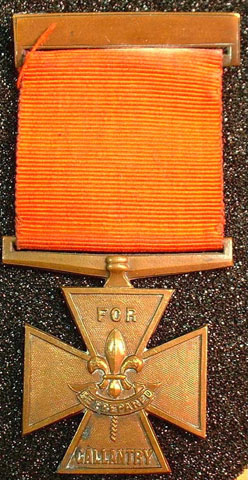
Boy Scout Association Bronze Cross awarded to G F W Keen in 1940
1940
Medal, bronze, with red ribbon, Boy Scout Association Bronze Cross (the Boy Scout's Victoria Cross), "For Gallantry", depicting Boy Scouts emblem and motto "Be prepared" on obverse. Inscribed on reverse "G F W Keen 4-9-1940". Scoutmaster George Frederick Wm Keen, 9th Farnham (Tongham) Group was awarded the Bronze Cross for his gallantry in saving from destruction, with the help of volunteers he had called for, an ammunition train which had been bombed during a raid at Tongham, August 1940. Awarded 4th September 1940.

Purse presented to George Hall esq
1853
Purse, "This purse containing 50 Guineas, is presented by the servants of the Lancashire & Yorkshire Railway Company, to George Hall, Esq as a warm tribute of respect for his considerate & proper exercise of authority during his Superintendence in that Company from which he is now retiring. June 24th 1853". With an image of a locomotive engraved on the reverse. Overall: 68 mm x 110 mm x 20 mm.

London & North Eastern Railway gallantry medal
1947
Medal, silver, London & North Eastern Railway, For Courage and Resource, awarded to driver Frederick Smart, for his actions on the 23rd July 1947 when a fire broke out on a train of wagons carrying mustard gas near Fulbourn, medal suspended from a bar looped into a ribbon of royal blue with three narrow vertical white stripes in the centre, designed by Gilbert Bayes, boxed, made by Pinches of London.

Medal for merit, G. F. Keen - Southern Railway
Silver gilt medal, Southern Railway, For Merit: G F Keen on green and yellow ribbon.

Model of Bleriot's Monoplane No. XI
1962
Model, scale 1.10, Bleriot's monoplane no. XI, unsigned, 1909-1910. With figure of Louis Blériot by Barbara Mary Campbell, Kingston-upon-Thames, Greater London, England, 1962
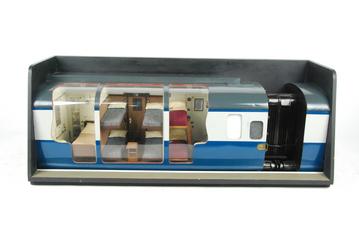
British Rail Mark II model, sectioned
1963
Model railway carriage section, British Rail, approx 1/12 scale, BR MK II sleeping car, probably BR apprentice built, c.1963.

'Electric tonic' amusement machine, Europe, 1915-1925
1915-1925
Electric tonic amusement machine c.1920
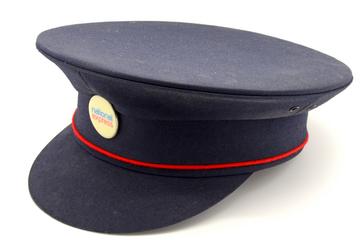
Peaked hat, National Express
National Express peaked hat, navy blue with red piping around the brim. 4 ventilation holes on brim. National Express circular plastic badge at front of brim.
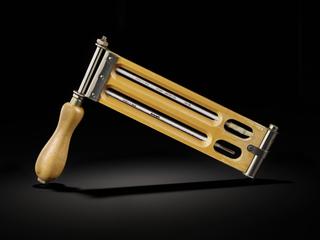
Whirling psychrometer for measuring humidity
1950-1953
Whirling psychrometer, also known as a sling psychrometer, for measuring humidity, designed by J. J. Griffin & Son Ltd. and made to B.S.2842 by A. Gallenkamp & Co. Ltd., Finsbury, London, UK, 1950-1953. Contains wet and dry bulb thermometers.

'Jason I', de Havilland DH.60G Gipsy Moth
1928
De Havilland Gipsy moth Aeroplane 'Jason I', by De Havilland Aircraft Company, Brent, Greater London, United Kingdom, 1928. Used on historic flight of Miss Amy Johnson to Australia, May 1930, DH.60G, G-AAAH
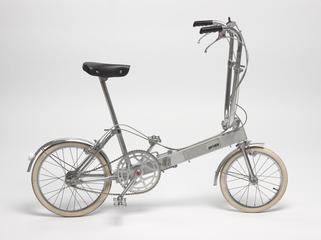
'Bickerton Portable' folding bicycle, 1976
1976
'Bickerton Portable' folding bicycle, manufactured by Vulcan Lighting and Leisure Ltd., Birmingham, 1976.

Dover Castle turret clock
1632-1640
Striking turret clock with original foliot balance and crown wheel escapement made between 1632 and 1640 in London. The clock was found at Dover Castle in 1872.

Two-valve short wave radio - telephonic receiver, 1927
1927
Two-valve, short wave radio - telephonic receiver, made for the Science Museum by Frederick H Walker, Walton-on-Thames, Surrey, England, 1927

Impulse sender (dial), 1915
1915
Impulse sender (dial) used in panel telephone exchange systems, made by the Western Electric Company, United States, 1915
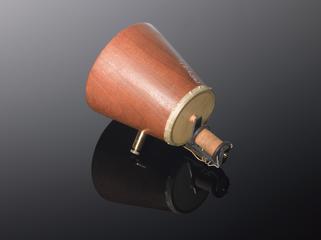
Replicas of Alexander Graham Bell's 1879 'Patent Office' telephone, 1959
1959
Replica of Bell's 'Patent-office' telephone of 1876, made by Science Museum Workshops, South Kensington, London, England, 1959
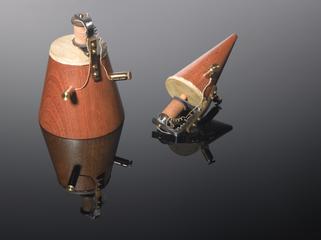
Replicas of Alexander Graham Bell's 1879 'Patent Office' telephone, 1959
1959
Replica of Bell's 'Patent-office' telephone of 1876, made by Science Museum Workshops, South Kensington, London, England, 1959

Radio tuning coil No. 300, 1922-1923
1922-1923
Burndept plug-in inductance coil No. 300, made by Burndept Limited, Blackheath, London, England, 1922-1923.

Radio tuning coil No. 100, 1922-1923
1922-1923
Burndept plug-in inductance coil No. 100, made by Burndept Limited, Blackheath, London, England, 1922-1923.

Radio tuning coil No. 200, 1922-1923
1922-1923
Burndept plug-in inductance coil No. 200, made by Burndept Limited, Blackheath, London, England, 1922-1923.

Radio tuning coil No. 150, 1922-1923
1922-1923
Burndept plug-in inductance coil No.150, made by Burndept Limited, Blackheath, London, England, 1922-1923.

Pye B16T television receiver
1946-1948
PYE B16T table-top television receiver, manufactured by Pye Limited, East Anglia, England, 1946-1948.

Pye 'Cambridge International' 11-band broadcast receiver, 1953
1953
Pye 'Cambridge International' 11-band broadcast receiver, type PE80, made by Pye Limited, Cambridge, England, 1953

Prototype ‘Manpack’ ground terminals, 1980-1989
1980-1989
Prototype ‘Manpack’ ground terminals developed for experimental use by Royal Signal and Radar Establishment on the UK MoD Skynet satellite communication system, manufactured by Ferranti Limited, Poynton, Cheshire, England, 1980-1989

Strowger automatic telephone, 1901-1910
1901-1910
Strowger table pattern telephone, manufactured by the Automatic Electric Company, Chicago, United States, 1901-1910

Part of Rugby transatlantic telephone transmitter, 1927-1956
1927-1956
Part of Rugby transatlantic telephone transmitter, made by Standard Telephones and Cables, New Southgate, England, 1927

Aerial inductances, 1901
1901
Four aerial inductances, wired together, used in Newfoundland in series with the balloon and kite aerials for tuning to the Poldhu (Cornwall) transmitted wavelength for the first wireless communication across the Atlantic, probably made by Marconi's Wireless Telegraphy Company, Chelmsford, Essex, England, December 1901

Henley's magneto electric double needle telegraph, 1848-1852
1848-1852
Henley's magneto electric double needle telegraph, made by the Magnetic Telegraph Company, England, 1848-1852.

Experimental form of Marconi Company magnetic detector, 1900-1910
1900-1910
Earliest experimental form of magnetic detector developed by the Marconi Company, with fixed soft iron core and single layer primary coil on core and telephone circuit winding in bobbin surrounding the primary coil, probably made by Marconi's Wireless Telegraphy Company, Chelmsford, Essex, England, 1900-1910

Receiving ‘jigger’ used by the Marconi Company, 1899
1899
Receiving ‘jigger’ or oscillation transformer with single layer split secondary coil and superimposed moveable two-part primary coil, used by the Marconi Company, probably made by Marconi's Wireless Telegraphy Company, Chelmsford, Essex, England, 1899

Atlantic cable specimen, 1865
1865
Specimen of 1865 Atlantic cable, made by the Telegraph Construction and Maintenance Company, Greenwich, London, England, 1865
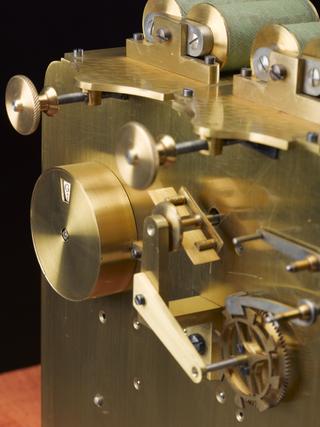
Wheatstone printing telegraph, 1841
1841
Wheatstone original printing telegraph, designed by Charles Wheatstone, unknown maker, England, 1841.

Rotary convertor, 1900-1950
1900-1950
Large rotary converter No. 28554, made by Marconi's Wireless Telegraph Company Limited, Chelmsford, Essex, England, 1900-1950

Sample of submarine telegraph cable, 1866
1866
Sample of submarine telegraph cable 25cm long, stated by donor to be from Norddeich-Norderney section of Norddeich-Lowestoft (Reuter), core made by Telegraph Construction and Maintenance Company, cable manufactured by W T Henley's Telegraph Works Company Limited, Greenwich, London, England, 1866

Wheatstone automatic tape transmitter, 1840-1860
1840-1860
Wheatstone automatic tape transmitter, unknown maker, England, 1840-1860

Iolanda transformer in wooden box, 1900-1950
1900-1950
Large lolanda transformer in wooden box, made by Marconi's Wireless Telegraph Company Limited, Chelmsford, Essex, England, 1900-1950
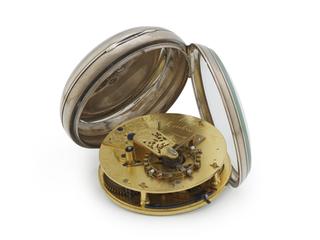
Deck watch by John Arnold and Son
1790
Deck watch by John Arnold & Son, London, c.1790. Outer mahogany deck-box, with Ivory tab signed 'Arnold & Son, London, 112' and broad arrow mark. Later silver case stamped with 112 with maker's initials JJ, and hallmarked for 1838 – 9. Enamel dial signed ‘Arnold & Son, London 112’. Jewelled movement with Earnshaw-type spring detent escapement. Signed on the movement 'John Arnold & Son London No. 112 Invt et Fec' also with broad arrow mark. Presented by the Lords Commissioners of the Admiralty to the Worshipful Company of Clockmakers in 1906. Clockmakers' Museum No. 431.

Silver and tortoiseshell pair cased watch by Ignatius Huggeford
1675
Silver pair cased watch by Ignatius Huggeford, with an outer case of tortoiseshell studded with silver. The dial has a rotating day-of-month rim, heart-shaped hour plaques and a steel arrow hand. The movement has a verge escapement, four-wheel train, worm-and-wheel set-up with silver regulator disc and a blued-steel balance cock with large ruby/glass 'endstone'. Signed 'Ignatius Huggeford Londini'. Made c.1675.

Table clock with pull quarter repeat by Thomas Tompion
1695-1700
Spring driven, striking table clock with pull quarter repeat and numbered 243, by Thomas Tompion, London, c.1695. Oak case veneered in ebony with cushion top, gilt brass mounts, carrying handle, and glazed side apertures with unglazed frets above. Gilt-brass dial with matted centre, applied silvered chapter ring, calendar and mock pendulum apertures, and steel hands. Subsidiary silvered dials at top for pendulum regulation and strike/silent. Fusee movement of 8 day duration with verge escapement and short pendulum, latched plates, and pull quarter repeating on one bell. Backplate engraved all over and signed ‘Tho Tompion Londini fecit’. Clockmakers Museum No. 562

Pendulum clock by Pieter Visbach
1660
Spring driven, striking pendulum clock, in ebonised wood case by Pieter Visbach, The Hague, c.1660. Brass dial covered with modern crimson velvet and applied silver chapter ring with every minute marked. Replica gilt hands. Applied name plaque signed 'Pieter Visbach Fecit Hagae met priuilege'. The dial is hinged to the case and carries the movement on the back of it. The movement is of 8-day duration with verge escapement, pendulum with silk suspension and cycloidal cheeks. A single going barrel drives both the going and striking trains.
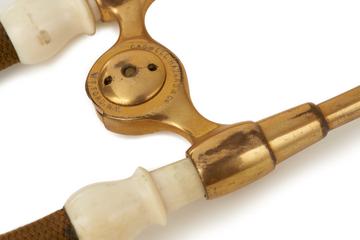
Early binaural stethoscope
1861-1866
Early binaural stethoscope, by W.F. Ford, Caswell Hazard and Co., New York, American, 1861-1886.
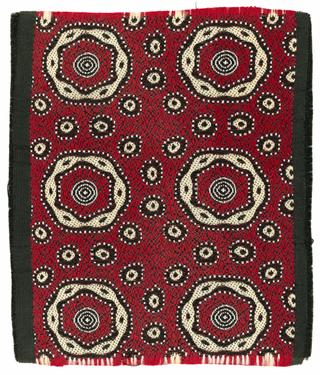
Haemoglobin 8.26, Festival Pattern Group silk tie fabric
1950-1951
Sample of jacquard-woven tie silk, red, black and gold (yellow), based on Max Perutz's crystallography, haemoglobin 8.26, nested hexagonal motif surrounded by circles, designed by George Reynolds, made by Vanners & Fennell Bros. Ltd, Sudbury, Suffolk, England, 1950-1951. Based on the X-ray crystallographic pattern of the haemoglobin molecule. From a collection of 83 samples designed for the 1951 Festival of Britain.

Jaipur artificial foot, India
1982
Jaipur artificial foot, for Symes amputee, made in India, 1982

Robert Dudgeon’s sphygmograph
1876
Sphygmograph which belonged to Dudgeon, by J. Ganter, 19 Crawford Street, London, England, 1876.

Ceramic teaching doll to show treatment for polio
1930-1950
Doll, ceramic infant doll, encased within a full body-length, supported plaster cast, probably used to demonstrate to child patients their prospective treatment for scoliosis, polio or skeletal TB with accompanying large and small descriptive labels, from the Lord Mayor Treloar Orthopaedic Hospital, Alton, Hampshire, England, 1930-1950